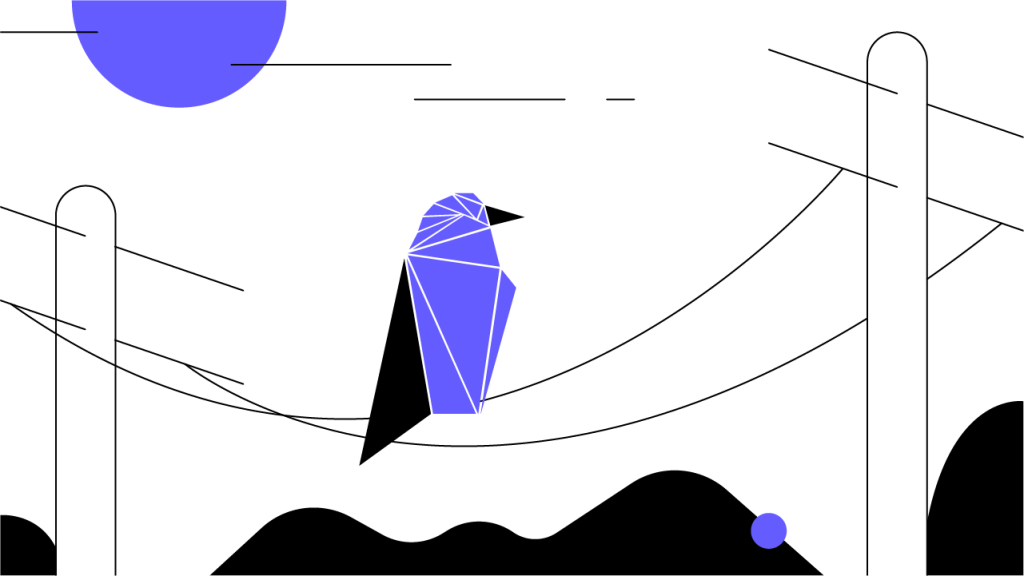Contents
Ravencoin (RVN): A Blockchain for Launching Tokens
Ravencoin is a Bitcoin code fork designed to allow anyone to issue tokens and digital assets.

Summary
Launched in 2018, Ravencoin is a Proof-of-Work blockchain specifically designed to facilitate the issuance of tokens, acting as an alternative to other token-capable chains such as Ethereum. Tokens issued on Ravencoin can be used for a variety of purposes, including representing real-world assets and NFTs. The project’s design is broadly similar to Bitcoin, though its total supply, block rewards, and proprietary Ravencoin mining algorithm are optimized for decentralization and efficient token transfer.
What Is Ravencoin?
Ravencoin is a blockchain that’s designed to allow anyone to issue on its network for a variety of reasons, so long as the main purpose of that token is as a means of transfer. The coding infrastructure of Ravencoin is based on a of , and the project offers token issuers an alternative to -centric blockchains like . Ravencoin highlights its decentralization-friendly and security model as its main advantage over other platforms.
Backed by Medici Ventures, a subsidiary of Overstock.com, the Ravencoin crypto project was launched in 2018 along with its RVN token without an or pre-sale, seeking fairer and more democratized access than some such structures have been seen to provide. Because Ravencoin did not conduct a or pre-sale of its coins, no RVN was set aside for developers, advisors, Medici Ventures personnel, or other early project participants. In 2020, the project created the Ravencoin Foundation with the aim of becoming independent from Medici Ventures. The Ravencoin crypto protocol is open source, so practically anyone can run, change, and contribute to the code.
X16R: The Unique Ravencoin Mining Algorithm
Ravencoin’s design is broadly similar to Bitcoin’s, though its developers made several key changes to the protocol to enable the creation and transactions of tokens launched on the network. Like Bitcoin, Ravencoin utilizes a consensus mechanism to secure the network. However, the particular it uses is called X16R, which is designed to allow for more decentralized mining than Bitcoin’s algorithm. More specifically, X16R is designed to resist mining via , expensive and specialized computer hardware that some see as making the mining process more profitable for industrial-scale operations than individual hobbyists. Other cryptocurrencies such as have employed comparable ASIC-resistant hashing algorithms for similar reasons, arguing that ASICs can lead to a higher degree of centralization amongst miners and thus a less secure network.
Ravencoin Is an “Asset Aware” Bitcoin Fork
Though tokens can be issued on the original Bitcoin blockchain — as exemplified by projects such as , , and the protocol — Bitcoin nodes are built to recognize that tokens are being issued. Consequently, every transaction intended to transfer a token on the Bitcoin blockchain must also send enough bitcoin for the protocol to recognize it as a valid transaction — even though the purpose of the transaction is to send the token. A further problem can arise when the user accidentally spends the bitcoin in the aforementioned transaction, as this destroys the token. Ravencoin seeks to solve these problems without introducing smart contracts or changing to a non-PoW consensus model.
There are a number of other differentiators separating the Ravencoin and Bitcoin consensus mechanisms. For example, the Ravencoin is 5,000 RVN, whereas Bitcoin’s is 6.25 BTC (as of 2021); its is 1 minute versus Bitcoin’s 10 minutes; and the total supply of RVN is 21 billion in contrast with Bitcoin’s 21 million. Ravencoin developers also altered the code to allow for the easy issuance and transfer of tokens and assets on the Ravencoin blockchain. So while the basic structure of Ravencoin is that of a peer-to-peer asset transfer blockchain, its consensus mechanism is optimized for efficiency — all while allowing users to mint and trade their own digital assets on the network.
RVN Crypto Use Cases
Ravencoin can be used to issue tokens that represent real world assets such as gold, shares of stock, virtual goods, rewards, and many other asset types. For example, in 2018, a digital securities company called Chainstone Labs issued 12.4 million digital shares on the Ravencoin blockchain. Users can also create on Ravencoin using an RVN wallet platform called MangoFarmAssets. Additionally, a tokenized version of RVN is available on and can be used for borrowing, lending, and trading in applications.
Ravencoin’s unique infrastructure as a Bitcoin-based network that offers the ability to launch and trade tokens — although without smart contracts or added utility — is likely an attractive option for enterprises and industries that need to launch a digital token that is primarily used for asset transfer.

Author
Is this article helpful?
